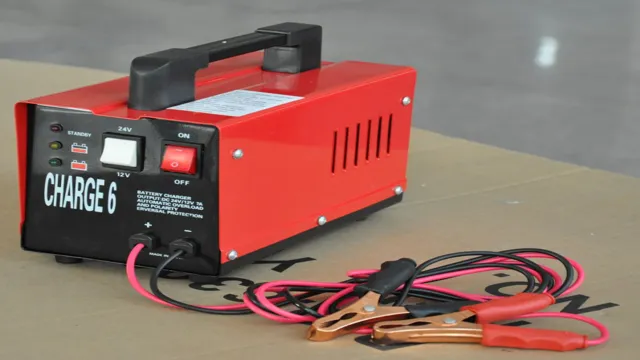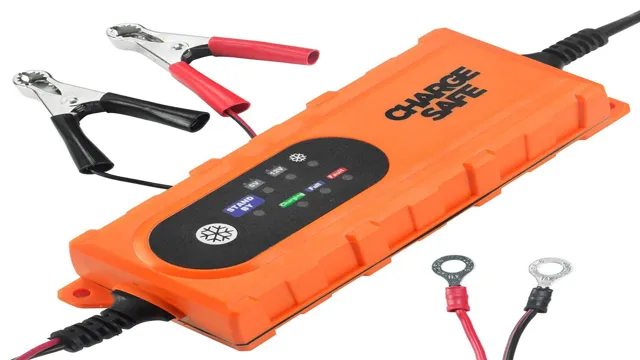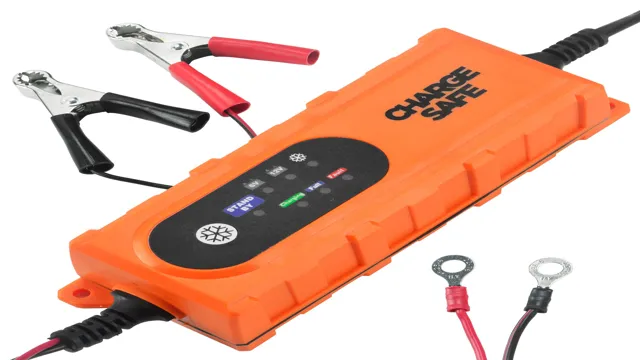How to Use Car Battery Charger at Home Like a Pro: A Step-by-Step Guide
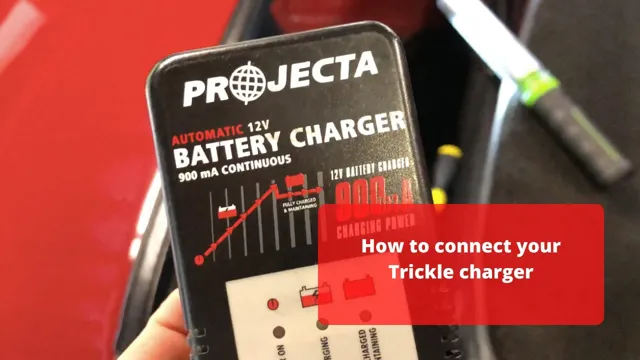
Have you found yourself with a dead car battery and no way to jump-start it? Don’t stress, you can easily charge your car battery at home with a car battery charger. But how exactly do you go about it? In this step-by-step guide, we’ll walk you through the process of charging your car battery at home. It’s a simple and cost-effective solution that can save you time and money.
So, grab your charger and let’s get started!
Understanding Your Car Battery Charger
If you’re wondering how to use a car battery charger at home, you’re not alone. It’s a helpful tool, but it can be intimidating if you’re not familiar with it. The first step is to make sure you have the right type of charger for your battery.
Once you’ve determined that, it’s important to read the instructions and safety precautions carefully before using it. Generally, you’ll need to connect the charger to a power source and then attach the red cable to the positive terminal of the battery and the black cable to the negative terminal. Set the charger to the appropriate settings for your battery and let it charge for the recommended time.
Remember to always use caution when working with electricity and wear protective gear, such as gloves and goggles. By following these steps, you’ll be able to safely and effectively use a car battery charger at home.
Types of Chargers
Car battery charger. Car battery chargers are essential tools for vehicle owners and mechanics. They come in different types, each with its own unique characteristics and applications.
For instance, trickle chargers are perfect for maintaining charged batteries and keeping them from fully discharging over extended periods. They are also inexpensive and easy to use. On the other hand, fast chargers are perfect for quickly recharging batteries that have been depleted.
They are ideal for jump-starting dead batteries, making them ideal for roadside emergencies. However, it is important to know that fast chargers can damage some batteries because of their high voltage output. Smart chargers, on the other hand, are designed to optimize the charging process and prolong battery life by providing a safe, efficient, and consistent charge.
They are more expensive than other types of chargers but well worth the investment. Whatever type of charger you choose, always make sure to follow the manufacturer’s instructions and guidelines to avoid accidents and ensure a long and healthy battery life.
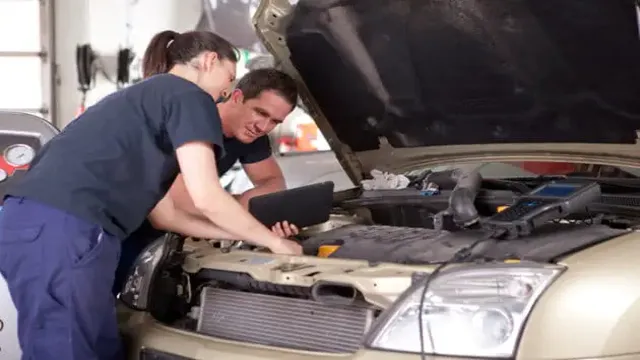
Voltage and Amperage
If you want to keep your car battery in good condition, you need to understand how your car battery charger works. Two important concepts to understand are voltage and amperage. Voltage is the electrical pressure that pushes the electrons through the battery.
Amperage is the amount of electricity that flows through the battery in a certain amount of time. When you connect your car battery charger to your car battery, it will provide both voltage and amperage. It’s important to make sure that the charger you’re using is compatible with your battery’s voltage and amperage needs.
A charger that provides too much or too little voltage or amperage can damage your battery. So be sure to read the manufacturer’s specifications before you start charging your battery. In general, slow charging at a low amperage is better for your battery’s health than fast charging at a high amperage.
So be patient and let your battery charge slowly and thoroughly. That way, you can be sure that your battery will last a long time and perform optimally whenever you need it.
Safety Precautions
As you prepare to use your car battery charger, there are a few critical safety precautions to keep in mind to prevent injury or damage to your vehicle. Firstly, always read the manufacturer’s instructions for your specific charger before attempting to charge your battery. Additionally, make sure that the charger is compatible with the battery’s voltage and capacity, as using an incorrect charger could damage the battery or even cause a fire.
It’s also crucial to wear protective gear, such as gloves and goggles, to prevent acid spills or other accidents. Lastly, never smoke or allow open flames near the battery or charger as this could ignite explosive gases. By following these safety guidelines, you can safely and effectively charge your car battery and prevent any accidents or damage to yourself or your vehicle.
Preparing Your Battery and Charger
If you’re looking to learn how to use a car battery charger at home, the first step is to prepare both your battery and charger. Before connecting anything, make sure the charger and battery are both turned off and disconnected from any power sources. Check the battery for any signs of damage or leaking, and clean any corrosion off the battery terminals.
Next, connect the charger to the battery according to the manufacturer’s instructions. This usually involves attaching the positive (red) cable to the positive battery terminal and the negative (black) cable to the negative terminal. Once connected, turn on the charger and monitor it closely, as overcharging can damage the battery.
The charging time will depend on the charger’s specific output, but most modern chargers will automatically stop charging once the battery is fully charged. By following these simple steps, you can safely and effectively use a car battery charger at home.
Checking Battery Fluid Levels
Checking the fluid levels in your battery is an essential part of maintaining your car’s electrical system. Before you do so, it’s important to prepare your battery and charger. First, ensure that your vehicle is turned off and the keys are removed from the ignition.
Next, put on protective gloves and eye goggles to protect yourself from any potentially harmful chemicals that may be present in the battery. You should also remove any jewelry or metal objects from your body to avoid the risk of electric shock. Once you’re prepared, locate your battery and remove the caps that cover the fill holes.
It’s important to note that not all batteries require fluid checks, so be sure to refer to your owner’s manual or consult with a professional if you’re unsure. By taking these precautions and following the proper steps, you can stay safe and ensure that your battery is in good working condition.
Choosing the Right Charger for Your Battery
Preparing your battery and charger is an important aspect of choosing the right charger for your battery. Before purchasing a charger, you need to determine the type of battery your device uses. This information is usually found in the user manual or on the battery itself.
Once you have identified the correct battery, you need to ensure that it is in good condition. Check for any signs of damage or corrosion, and ensure that it is fully charged before connecting it to the charger. It is also important to read the instructions that come with the charger and follow them carefully.
This will ensure that the charger is used correctly and minimize the risk of damage to your battery or device. By taking these steps, you can ensure that your battery and charger are prepared for use, and you can choose the right charger that will keep your device powered up and ready to go.
Connecting Your Charger to Your Battery
If you’re wondering how to use a car battery charger at home, the process is actually quite simple. First, make sure your car is turned off and the charger is unplugged. Then, locate your car’s battery and the positive and negative terminals on it.
Connect the red clamp to the positive terminal and the black clamp to the negative terminal. Make sure you have a secure connection, and then plug in your charger to a power source and turn it on. Your charger should have a meter that shows the charge level, so monitor it regularly.
Once your battery is fully charged, turn off the charger and unplug it before disconnecting the clamps from your battery. Remember, safety is crucial, so always follow the instructions provided with your charger and wear protective gear, like gloves and glasses, while handling the equipment. By following these steps, you can easily and safely charge your car battery at home.
Identifying Positive and Negative Terminals
Connecting Your Charger to Your Battery Before connecting your charger to your battery, it is important to identify the positive and negative terminals on both the charger and the battery. The positive terminal is typically marked with a plus sign (+) and the negative terminal is usually marked with a minus sign (-). It is crucial to ensure that you connect the charger’s positive terminal to the battery’s positive terminal, and the charger’s negative terminal to the battery’s negative terminal.
Failure to do so may result in damage to your battery or even a potential hazard. Once you have identified the terminals, you can begin the process of connecting your charger. Remember to always read the instruction manual provided by the manufacturer, as each battery and charger may have specific instructions for the connection process.
By taking the time to properly identify and connect the positive and negative terminals, you can ensure that your battery stays charged and performs optimally.
Connecting the Charger Clamps to the Battery
Connecting the charger clamps to the battery can seem like a daunting task, but with a little bit of practice, it becomes a piece of cake. The first step is to ensure that your vehicle is turned off and parked in a safe location. Then, locate the battery and remove the protective caps from the positive and negative terminals.
The positive terminal is usually labeled with a “+” sign and is typically colored red, while the negative terminal is labeled with a “-” sign and is colored black. Next, connect the red charger clamp to the positive terminal and the black charger clamp to the negative terminal. Ensure that the clamps are securely attached and that there is no corrosion on either the clamps or the terminals.
Once everything is in place, turn on your charger and observe the charging process until the battery has reached its desired charge level. Remember to follow all safety precautions and to consult your charger’s user manual for specific instructions.
Adjusting Charger Settings
When it comes to charging your battery, it’s essential to adjust your charger settings to ensure optimal performance. Connecting your charger to your battery is straightforward, but it’s crucial to follow the manufacturer’s instructions carefully to avoid damage to your battery or charger. Before you begin, make sure you have the correct charger for your battery type.
Once you’ve connected the charger, you’ll need to set the charging rate and voltage based on your battery’s specifications. This step is critical to ensure that your battery is charged safely and efficiently. Some chargers come equipped with automatic settings that adjust based on the battery type and state of charge, but it’s still important to check and adjust your settings manually if necessary.
Overall, taking the time to adjust your charger settings properly will help extend the life of your battery and ensure reliable performance in the long run.
Charging Your Battery
If you’re wondering how to use a car battery charger at home, it’s actually quite simple. First, make sure you have the appropriate charger for the type of battery you have. Once you have the charger, locate the battery in your car and disconnect the negative cable using a wrench.
Then, connect the positive cable on the charger to the positive terminal on the battery and the negative cable to the negative terminal. Next, plug in the charger to a power outlet and turn it on. It’s important to make sure the charger is set to the correct voltage and amperage for your battery.
The charging process can take a few hours, so be patient and don’t leave the battery unattended. Once it’s fully charged, turn off the charger, disconnect the cables, and reconnect the negative cable to the battery. With these steps, you can safely and effectively charge your car battery at home.
Monitoring the Charging Process
Monitoring the charging process is an essential step when charging your battery. It’s crucial to keep a close eye on your battery’s temperature, voltage, and current during the charging process to ensure efficient charging and prolong your battery’s lifespan. Overcharging can damage your battery and shorten its life expectancy, so monitoring it is essential.
A simple way to do this is to use a battery charger with a built-in monitoring system. This charger will display information such as the current voltage, the charging current, and the battery temperature, giving you real-time information about your battery’s charging process. By monitoring your charging process, you can ensure that your battery is charging correctly and prolong its lifespan, saving you money and frustration in the long run.
Remember, always monitor your battery during the charging process to ensure optimal performance and longevity.
Disconnecting the Battery and Charger
When it comes to charging your battery, it’s important to know how to disconnect it properly to avoid any damage or safety hazards. Before unplugging the charger, make sure to turn it off and unplug it from the wall. Then, carefully remove the charger from the battery, being mindful of any cords or connections.
If you leave the battery plugged in after it’s fully charged, it can cause the battery to degrade over time or cause potential safety hazards like overcharging or overheating. Safety should always come first, so make sure to follow these steps to properly disconnect your battery and charger to ensure it’s charged efficiently without any harm.
Conclusion
In conclusion, using a car battery charger at home is simple and can save you time, money, and frustration. Just make sure to follow the instructions carefully, be aware of safety precautions, and always keep an eye on the charging process. With a bit of patience and some knowledge, you can keep your car’s battery fully charged and ready for action, without leaving the comfort of your own home.
So, don’t let a dead battery slow you down, charge it up and hit the road with confidence!”
FAQs
What is a car battery charger and how does it work?
A car battery charger is a device that supplies electric energy to a discharged car battery in order to recharge it. It works by converting AC power from a wall outlet into DC power that can be stored in the car battery.
Can I use a car battery charger to charge other types of batteries?
It depends on the type of battery charger you have. Some chargers are designed to only charge car batteries, while others can charge a variety of batteries such as marine, deep cycle or motorcycle batteries. Always check the manufacturer’s instructions to determine what types of batteries your charger is compatible with.
What safety precautions should I take when using a car battery charger?
You should always wear safety goggles and protective gloves, and make sure the charger is turned off and unplugged from the wall outlet before connecting it to the battery. Follow the manufacturer’s instructions carefully and never touch the battery terminals with your bare hands.
How long does it take to fully charge a car battery using a charger?
This depends on several factors such as the size and age of the battery, the type of charger and the charge rate it provides. As a rough estimate, a completely dead car battery can take around 4-24 hours to fully charge depending on the charger.
Can I leave a car battery on the charger overnight?
Yes, but it depends on the charger. Some chargers come with an automatic shut-off feature that stops charging when the battery is fully charged. If your charger does not have this feature, it is best to check on the battery periodically and remove it from the charger once it is fully charged to prevent overcharging.
How often should I charge my car battery?
It is recommended to charge your car battery at least once a month to keep it properly maintained, especially if you do not drive your car regularly. If the battery is completely dead, it should be recharged before attempting to start the car.
Can I use a car battery charger to jump-start my car?
No, a car battery charger is not designed for jump-starting a car. You will need a jump-starter or jumper cables for that. A car battery charger is meant strictly for recharging a battery, not providing power to start the car.
